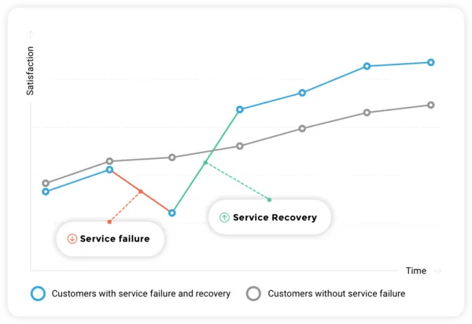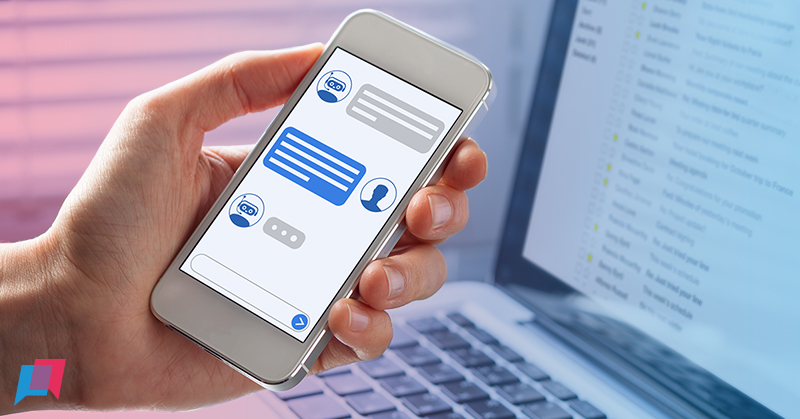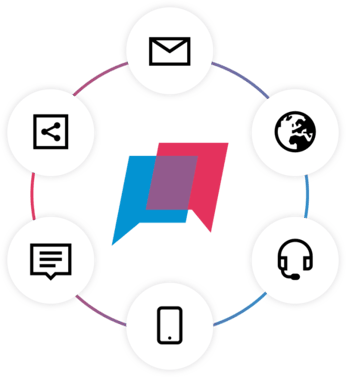
More and more organizations are deploying a chatbot to support their service department. A chatbot is in fact good at handling recurring questions. They can handle about 80% of common questions. This saves the service staff an enormous amount of time, which they can better spend helping customers with more complex questions.
Thanks to a chatbot, you can not only offer a high-quality service to your customers, but also save costs. But what effect does the use of a chatbot have on the service experience of an organization? Or do people still prefer human contact?
How are chatbots experienced?
What does a chatbot generally do to the customer experience? Most consumers are very satisfied when they are helped by a chatbot that works well. After all, the question they ask is answered in no time.
But customers with a trickier question or who need empathy in the conversation won't be so quick to get away with just a bot. And when a chatbot doesn't work well, it actually produces more frustration. According to a 2019 CostumerFirst article, a bot that doesn't understand the customer question or struggles to answer it creates much more frustration than when a human doesn't understand the question.
It also makes a difference whether the organization offers human contact in addition to a bot. 27% the consumers see it as a hindrance when an organization does not offer an opportunity to interact with an employee (CustomerFirst, 2019). So only using a chatbot and no contact with real people is definitely not an option. In addition, you need to have a good backup plan when the chatbot cannot help the customer!
A 2020 study by Freshworks found that a quarter of consumers say chatbots have trouble solving their problems. This is because companies are not yet using their chatbots effectively enough and the technology behind them needs to become more sophisticated. Think about deploying artificial intelligence. And this is very important, because a bad customer service experience (and therefore a bad experience with a bot) can cause the customer to leave the organization and not come back.
Thus, deploying chatbots brings advantages, such as faster service and reducing costs, but also disadvantages when chatbots don't work well. And these disadvantages are huge! Dissatisfied customers, high frustration and irritation and customers who are less inclined to come back.
In order to detect as quickly as possible when chatbots are beneficial or when they actually cause frustration, you need to have a continuous view of the customers' experience. To do this, you can measure chatbot experience. You do this by asking a question at the end of the conversation about what the customer thought of the conversation.

Chatbots vs. agent performance
With Insocial, you measure both your call center satisfaction and your chatbot! This gives you valuable insights that you can benefit from. The benefits are:
1. You can immediately see the differences between chatbots and agents in terms of satisfaction
Because you measure this in the same way, you can also immediately see the differences. What is the average satisfaction of customers when they speak to your agents? And how satisfied are they when they are helped by the bot? This way you can monitor what has a better effect on the customer experience and determine what you can do to make it better.
2. Optimize your chatbot by combining data
Combine the satisfaction scores of your chatbot with other data, such as type of question, subject and handling time, and you can start making connections. For example, what types of questions or topics produce dissatisfaction that are currently being handled by the chatbot? You can then start analyzing these conversations to find out what the chatbot could have done better. Where exactly are the biggest frustrations coming from? When is the chatbot unable to help the customer? With this input, you can start optimizing your chatbot in a very targeted way.
3. Integrate survey questions into your chatbot
Another bonus: you don't have to send your customers a link to a survey. The chatbot can ask the survey questions itself and send this data to Insocial. As a result, you can see these results directly next to the performance of your agents. This means the customer is not taken out of the conversation to give his or her opinion. Giving feedback is therefore even faster.
Tips for measuring and improving your Chatbot Experience
Tip 1. Ask the right questions
Do you want to measure the experience of a chatbot? Then it's best to ask one or two questions at the end of a chatbot conversation. Keep this moment as short as possible to achieve a high conversion rate. The questions you should ask are: "Are you satisfied with the chatbot conversation?" or "Were you helped by the chatbot conversation?" and an admission question, such as: "Can you provide an explanation?" or "Why were you not helped?". The clarification question allows you to gather additional feedback on how your chatbot works.
Tip 2. Optimize based on insights
As we just mentioned, feedback about your chatbot is only of real value if you combine it with other data. Think of subjects, types of questions, frequency of contact or response time. In this way you recognize trends and start learning when customers are dissatisfied. This also applies to your chatbot. What happens when the chatbot doesn't understand the question? When does that frustration start and how can you prevent it? This is important, considering only a well-functioning chatbot contributes to a pleasant experience. A non-functioning chatbot actually creates negative associations with your service and with your brand.
Asking the questions above will give you a big head start. You can immediately see whether customers are satisfied or not and why. This enables you to find the errors of your chatbot more quickly. Subsequently, analyze these conversations well and come up with the right improvements to make your chatbot work better.
Tip 3. Test the improvements you apply and re-test satisfaction
Each improvement you apply should then be tested properly before going live. When you have done this, and the changes are live, you can also test these changes for satisfaction by asking the same questions. This way you can monitor whether the changes have a positive or negative effect on the satisfaction of your customers.
Tip 4. Deploy a 'Service Recovery flow' to fix errors immediately
When a customer indicates that they have not been helped or are not satisfied, you can immediately send an alert to an employee to take care of this. After all, the customer has not been helped yet. When you as an organization proactively contact the customer to further help, you will score a lot of points! We call this the 'Service Recovery Paradox'. This means that when something goes wrong and the organization solves it correctly, the customer appreciates the organization even more than when everything would have gone right the first time. In the image below you can see that this is depicted in a graph. After the mistake is fixed, the satisfaction line rises to higher point than the line where no mistakes were made.
To sum up: Chatbots for quick questions, agents for complex problems!
Chatbots are incredibly valuable for handling a high volume of recurring questions. But it only delivers a good experience if the chatbot really works well. Human beings, your agents, are better used to help customers with complex situations and situations where empathy is important. The combination of the two delivers the best experience, namely: fast, effective, friendly and still personal and human!
Accelerating the path to a good chatbot experience? By using Insocial, you will discover faster what goes wrong with your chatbot and where customers get frustrated in the process. These moments you can immediately start to improve, test, test off and reap the benefits of! Namely: a better, faster service and lower costs.




